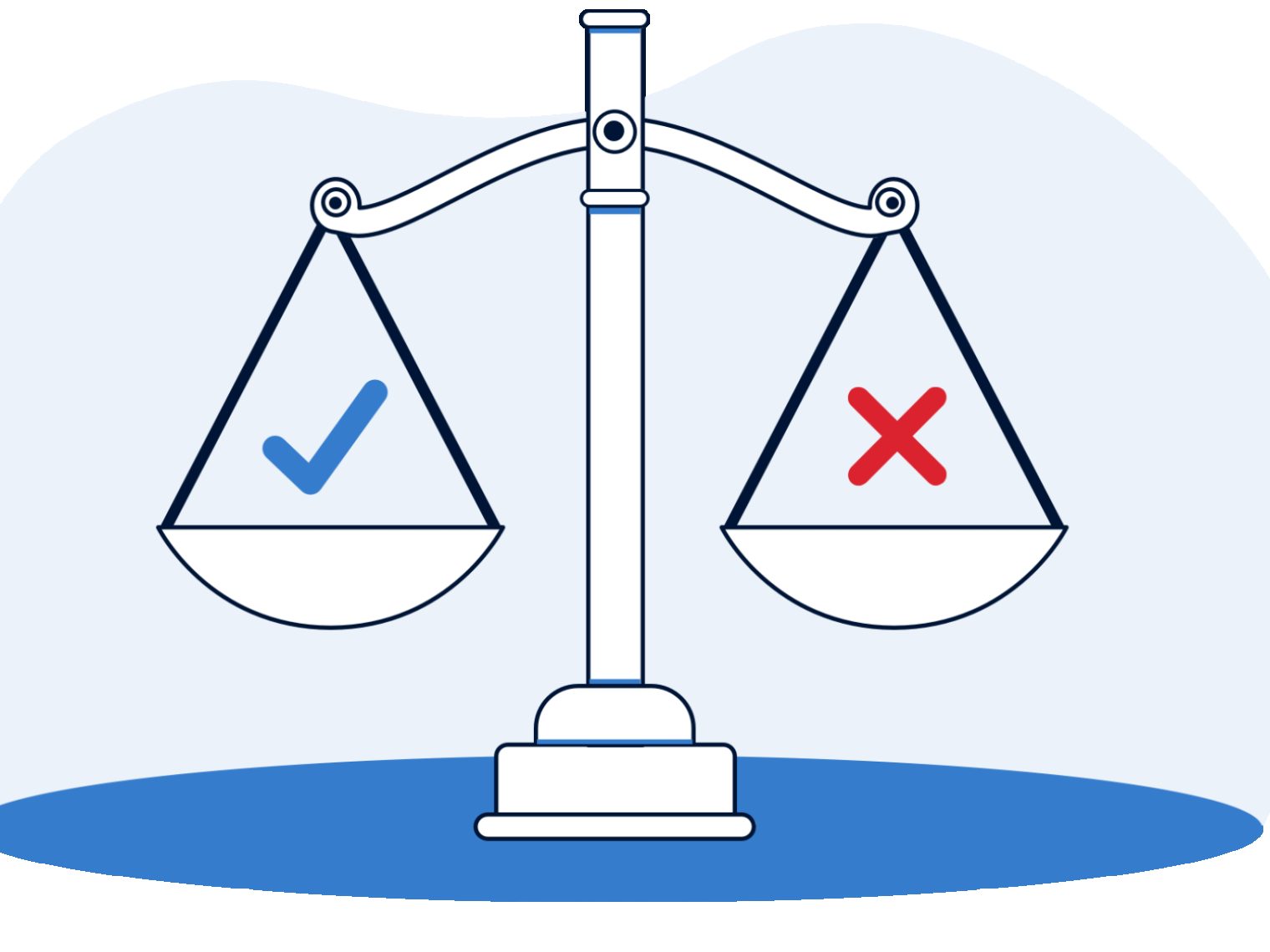- Veterans can refinance from a conventional loan to a VA loan through a VA Cash-Out refinance.
- Switching to a VA loan offers benefits like no PMI, a higher LTV limit and lower interest rates.
- Conventional homeowners will need to pay the VA Funding Fee when refinancing.
One of the myriad benefits of VA loans is that qualified Veterans with non-VA home mortgages can refinance into a VA loan. Let’s take a look at the VA refinance requirements and how to refinance a conventional loan into a VA loan.
Can a Conventional Loan Be Refinanced to a VA Loan?
Yes, a conventional loan can be refinanced into a VA loan. If you currently have a conventional mortgage and qualify for a VA loan, you can switch to a VA loan by using a VA Cash-Out refinance.
This option allows you to tap into your home equity while replacing your existing loan with a brand-new VA-backed mortgage. You can also use it to refinance a non-VA loan without having to take out cash.
The VA also offers a second refinance option called the VA Streamline refinance, but it's only available to those who already have VA-backed mortgages.
Do I Have to Take Cash Out?
It may be confusing to learn that you don’t actually have to take cash out to use a VA Cash-Out refinance. If you are using this option to switch from a conventional loan to a VA loan, then you’re not required to take cash out.
The VA Cash-Out refinance is simply the only option for non-VA borrowers to jump into the VA loan program. You can, however, take cash out as part of the refinance process if you want.
Requirements for a Conventional to VA Refinance
You’ll have to meet certain requirements before you can switch from a conventional to a VA loan. VA refinancing a conventional loan usually means you need to have at least six months of consistent payments on your conventional loan. However, these requirements may differ by lender.
Veterans United Home Loans looks for seven consecutive months of payments on the original loan, and the cash-out refinance must happen at least 240 days after the initial payment due date on the original loan, among other guidelines.
You’ll also need to meet the standard eligibility requirements for a VA loan, which can include:
- Meeting the length of service requirement. If you are a current service member, then you must have served for at least 90 consecutive days. If you are a Veteran, the length of service requirement varies by when you served.
- Having a Certificate of Eligibility (COE): If you meet the length of service requirements, you can apply for a VA COE. This shows lenders that you qualify for a VA loan based on your service background. Lenders can typically get this document for you later in the process.
- Living in the home: To convert your conventional mortgage into a VA loan, the loan must be for your primary residence. You can’t use a VA Cash-Out refinance for an investment property or vacation home.
- Following loan-to-value (LTV) guidelines for VA loans: While the VA allows you to borrow up to 100% of the value of the home, lenders may have different requirements for LTV. Most lenders typically limit LTV at 90% or less of the property’s value.
A VA Cash-Out refinance isn't a second mortgage or a home equity loan, but actually replaces your current mortgage. Depending on the terms, refinancing may result in higher finance charges over the life of the loan.
Pros and Cons of Refinancing From Conventional to VA Loan
| Pros | Cons |
|---|---|
| No private mortgage insurance (PMI) | Must pay VA Funding Fee if not exempt |
| Higher loan-to-value limit | An appraisal is required to meet VA guidelines |
| No prepayment penalties | Seasoning requirements |
| Typically lower interest rates | Still involves closing costs |
| Foreclosure protection | May extend repayment timeline |
Refinancing your conventional loan to a VA loan has benefits and drawbacks. Before deciding to refinance, let's take a closer look at these factors.
Advantages of Converting a Conventional Loan to VA
- No PMI with VA loans regardless of equity: With a conventional loan, borrowers usually have to pay for private mortgage insurance (PMI) if they have less than 20% equity. VA loans don’t require PMI for any equity level.
- Refinance up to 100% of your home’s value: Conventional cash-out refinance options typically cap at 80% loan-to-value, but VA loans allow eligible borrowers to refinance up to 100% LTV. Lenders typically cap this at 90%, but it is still higher than conventional limits.
- No prepayment penalties: VA loans do not penalize you for paying off your loan early, a benefit that’s often less common in some conventional loans.
- Lower interest rates: VA loans are government-backed, allowing lenders to offer lower interest rates than conventional loans for eligible borrowers. Even a small rate reduction can save thousands over time.
- Protection against foreclosure: VA loans have built-in protections, such as access to a VA loan technician for borrowers facing financial hardship, which are not available with conventional loans.
Disadvantages of Converting a Conventional Loan to VA
- VA loans require a funding fee: When you take out a VA loan, borrowers who aren’t exempt must pay the VA Funding Fee. The fee can vary depending on your loan amount, usage and whether it’s your first VA loan. The fee can cost anywhere from 1.25% to 3.3% of the loan amount.
- Must pass an appraisal and VA-specific guidelines: The VA requires an appraisal for all VA Cash-Out refinances. If your appraisal comes in lower than the previous loan value, you may need to adjust what you can borrow. The appraisal may also require repairs before you can move forward with getting the VA loan.
- Meet seasoning requirements: You must meet the waiting period required by your lender before you can use a VA Cash-Out refinance.
- Still pay closing costs: Though VA loans often have lower fees overall, refinancing still incurs closing costs that can add up if not carefully considered.
- May reset your loan term: Refinancing may extend your repayment timeline, potentially increasing the total amount paid over the life of the loan if not managed properly.
The Costs of VA Refinancing a Conventional Mortgage
Refinancing a mortgage is not free. While you may have lower costs overall, it’s a good idea to evaluate the costs of refinancing compared to the savings on your loan to make sure you will save money through the refinance.
The average refinancing cost is 2% to 5% of the loan amount. If you have a $300,000 loan, you could pay anywhere from $6,000 to $15,000 to refinance your conventional mortgage into a VA loan.
On top of the typical refinancing costs, you must pay the VA Funding Fee when you refinance to a VA loan. The cost of the fee can vary, and some may be exempt, but it’s calculated as a percentage of the loan amount. Homeowners can finance the fee into their loan.
The percentage is different depending on how many times you have had a VA loan and the size of your down payment. This fee helps keep the VA loan program running and can either be paid upfront or rolled into your loan amount. Use our VA Funding Fee calculator to see what you can expect to pay.
Refinancing also requires you to pay closing costs. These are all the fees and expenses that are part of opening a new mortgage loan. Closing costs vary by lender and the area where you live. However, these are some of the typical closing costs you can expect:
- Origination fee: A fee charged by the lender, usually costing up to 1% of the loan amount
- VA appraisal fee: Typically costing anywhere from $600 to $1,300, depending on the property location
- Title insurance and fees: These may cost anywhere from $300 to $2,000.
- Credit report fee: Charged per borrower, and may cost anywhere from $10 to $100 per person
- Recording fee: The cost to legally record your loan change and may cost $250 in some cases.
- Attorney/settlement fees: Either a lawyer or a title company oversees loan closing and the fees could range from $500 to $1,000.
- Prorated taxes or insurance: Lenders may require you to pay property taxes and homeowners' insurance upfront for the remainder of the year.
On top of these standard closing costs, consider the possibility of higher interest costs. If you take cash out when you do a VA Cash-Out refinance, your loan amount will increase and you’ll pay interest on a larger balance.
Conventional Loan to VA Loan Refinance Process
The process for a VA Cash-Out refinance looks similar to getting a VA purchase loan. Follow these steps to switch your conventional loan to a VA loan.
1. Check Your Finances
Knowing where you stand financially will help you determine if you are financially ready to refinance your loan. It also helps you estimate the interest rates you may qualify for.
Start by checking your credit score. You can get a free credit report each year from AnnualCreditReport.com. Many banks and online tools also offer free credit reporting services, so check with your bank to find out if you have that service. VA loans typically offer more competitive interest rates than most conventional loans, but those with a higher credit score will qualify for the best rates.
Also, check your debt-to-income (DTI) ratio. This ratio evaluates all of the debts you have compared to how much money you make. The lower your DTI, the better. Homeowners with a DTI ratio above 41% need to meet additional VA guidelines for residual income.
2. Choose a VA Lender
When you feel like you are financially prepared to refinance your conventional loan, it’s time to look for lenders. Not all lenders are the same, so don’t assume you’ll pay the same rates and fees everywhere.
Consider working with a lender that specializes in VA financing since not all lenders offer VA loans. Look at interest rates, fees and closing costs, along with customer service reviews and the lender’s reputation.
3. Apply for a VA Cash-Out Refinance
Once you’ve chosen a lender, it’s time to apply for a VA Cash-Out refinance. Unlike a home purchase, you typically won’t need a formal preapproval. Instead, you’ll start the refinance process by submitting a full loan application.
Your lender can guide you through this process, but be prepared to provide the following:
- Your COE
- Identifying documents
- Pay stubs
- Record of assets
- Bank statements
- Current conventional loan information
If you're taking cash out from your home’s equity, you’ll also want to let your lender know how much you want to borrow and how you plan to use those funds.
4. Order an Appraisal
As previously mentioned, a VA appraisal is required when switching from a conventional mortgage to a VA loan. You’ll need to get one to make sure your property meets the VA’s Minimum Property Requirements (MPRs).
Once your loan application is under way, your loan team will send a request for the appraisal to the VA. An independent appraiser will then complete the process. Appraisals typically take between one and two weeks to complete and can cost anywhere from $600 to $1,300, depending on your location.
5. Underwriting and Loan Approval
Just like any mortgage loan, a VA Cash-Out refinance requires you to go through the underwriting process. This process is where your lender verifies key information about your ability to repay the loan, along with information about the property.
During the underwriting process, underwriters take time to look at your financial profile, appraisal results and loan terms to decide if you meet the standards for a VA loan. They may ask for additional documentation during this time. For a faster closing, provide the requested documents as soon as possible. The entire underwriting process usually takes about two to four weeks.
6. Finalize Your VA Loan
Congrats! You’ve made it to closing. You will now go through all the steps needed to close the loan. This includes:
- Paying any upfront costs, such as the VA Funding Fee (if not rolled into the loan)
- Settling any prorated taxes, homeowners' insurance and other fees
- Verifying the payoff of your existing conventional loan
- Signing all necessary paperwork to finalize the refinance
From start to finish, refinancing your conventional loan to a VA loan usually takes between 30 and 45 days. However, this can vary depending on how long the appraisal takes and the time the lender needs to close the loan.
Is Refinancing to a VA Loan Worth It?
Your decision to refinance to a VA loan largely depends on your cost-benefit analysis. Refinancing will cost money, but if you plan to stay in the home long-term, this can work out well. The lower monthly payments and no PMI can mean you save enough money over time to make up the costs and more.
But if you don’t plan to stay in the home long, it may not be wise to refinance to a VA loan. Look at the numbers and determine when the closing costs associated with the refinance will break even with how much you can save by switching to a VA loan.
Talk to a Veterans United VA loan expert at 855-870-8845 or get started online today to explore your VA refinancing options.
How We Maintain Content Accuracy
Our mortgage experts continuously track industry trends, regulatory changes, and market conditions to keep our information accurate and relevant. We update our articles whenever new insights or updates become available to help you make informed homebuying and selling decisions.
Current Version
Jul 8, 2025
Written ByChris Birk
Reviewed ByTara Dometrorch
Major content updates to improve clarity and conventional to VA loan process. Article fact checked and reviewed by team lead underwriter Tara Dometrorch.
Veterans United often cites authoritative third-party sources to provide context, verify claims, and ensure accuracy in our content. Our commitment to delivering clear, factual, and unbiased information guides every piece we publish. Learn more about our editorial standards and how we work to serve Veterans and military families with trust and transparency.
Related Posts
-
 VA Renovation Loans for Home ImprovementVA rehab and renovation loans are the VA's answer to an aging housing market in the United States. Here we dive into this unique loan type and the potential downsides accompanying them.
VA Renovation Loans for Home ImprovementVA rehab and renovation loans are the VA's answer to an aging housing market in the United States. Here we dive into this unique loan type and the potential downsides accompanying them. -
 Pros and Cons of VA LoansAs with any mortgage option, VA loans have pros and cons that you should be aware of before making a final decision. So let's take a closer look.
Pros and Cons of VA LoansAs with any mortgage option, VA loans have pros and cons that you should be aware of before making a final decision. So let's take a closer look.


